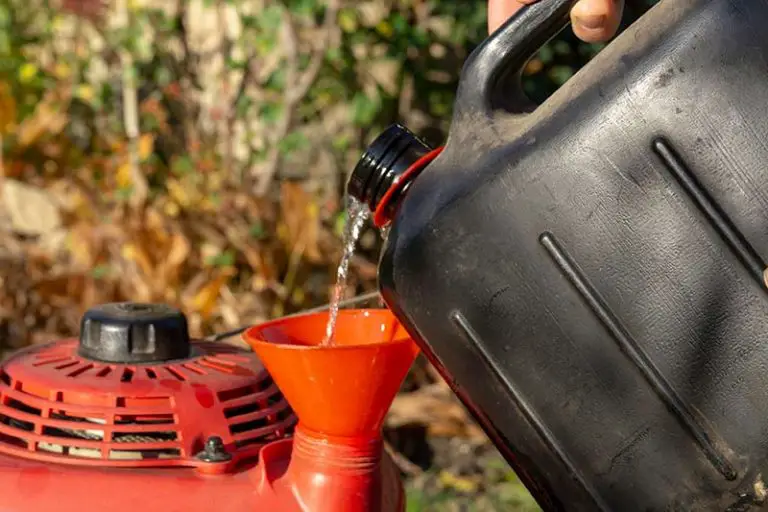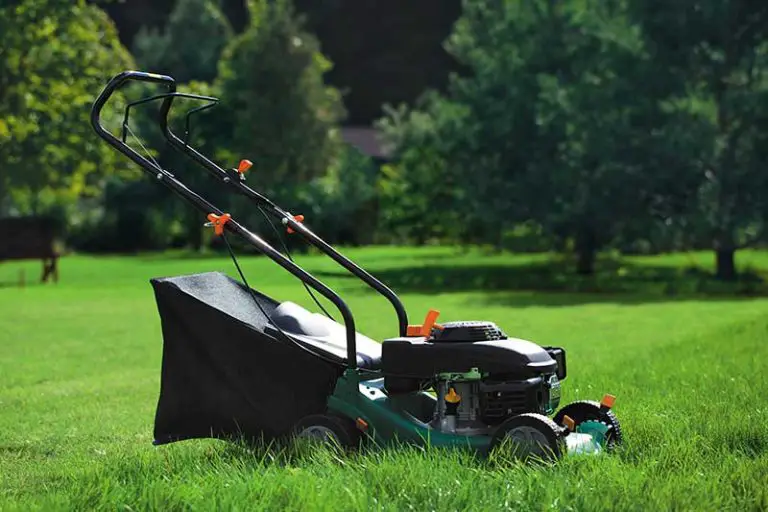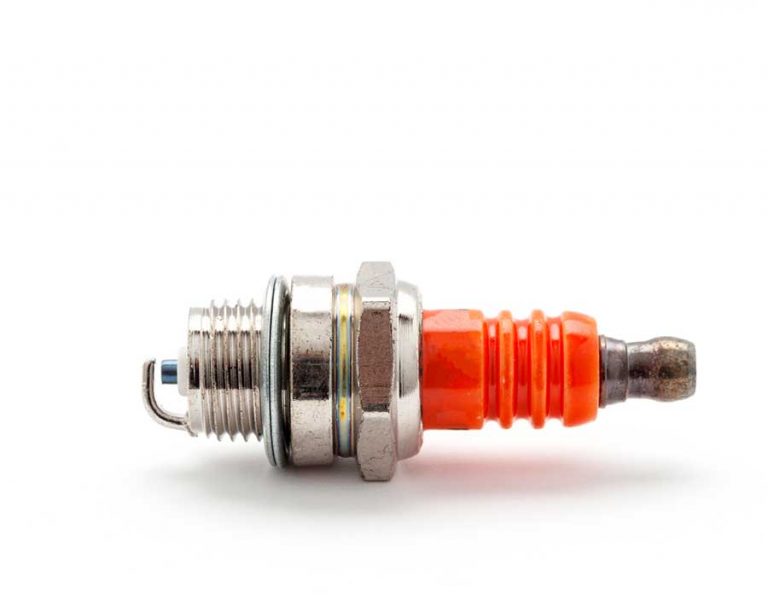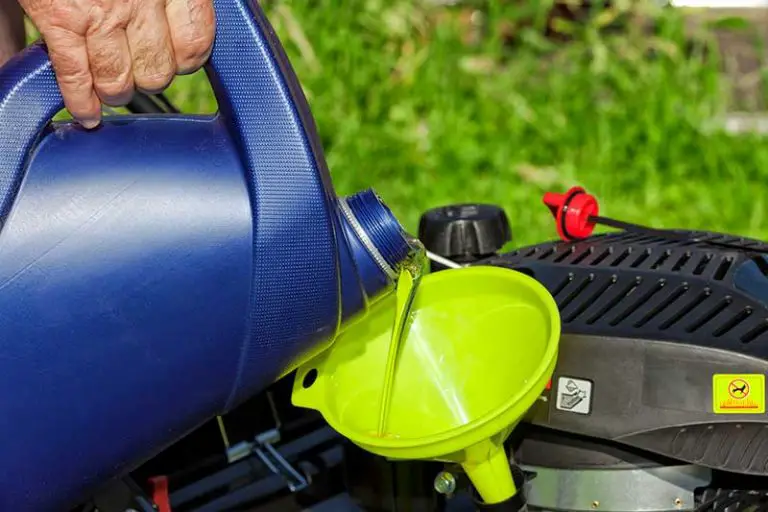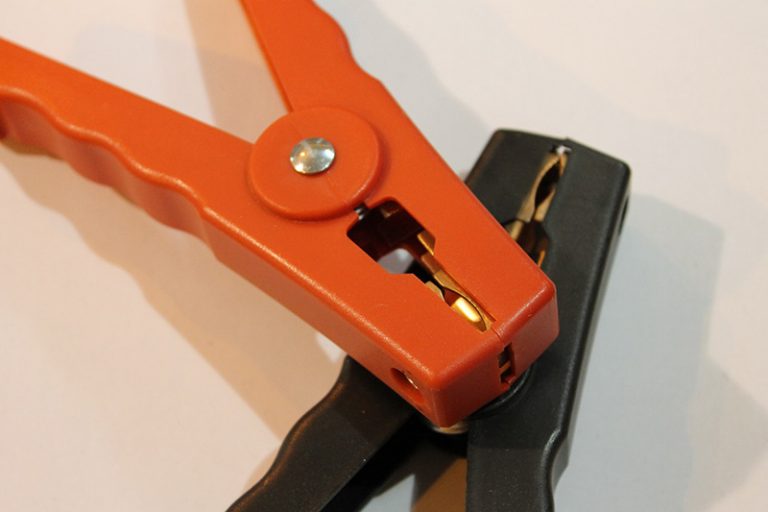What Kind of Oil Does a Lawn Mower Take?
Oil is a vital component required for your lawn mower to run smoothly. Without a sufficient amount of oil, the inner workings of the mower are left vulnerable to overheating, as well as becoming damaged from dirt and debris. It’s essential to pick the right kind of oil for your specific mower to ensure that it runs at its best while also keeping it in top condition by protecting its inner mechanisms during use.
In general, any kind of oil that’s suitable for cars or trucks will work in a four-stroke lawn mower. To determine the best kind of oil for your specific mower, you should look at the service rating and viscosity grade, as these two labels indicate the quality of the oil and how well the oil performs under various temperatures respectively.
Read on to learn more about the different kinds of oil that your lawn mower can take, followed by a handy guide on how to check the current oil level in your mower.
Why the Right Kind of Lawn Mower Oil Matters
As is the case for anything with an internal combustion engine, lawn mowers need oil to protect their inner mechanisms during operation. Even smaller mower engines contain multiple moving parts which have been specially designed to function at extremely high temperatures and speeds. Without oil, your lawn mower engine wouldn’t be able to run for long before overheating, seizing, and breaking down completely.
Mower oil behaves as a lubricant for the intricate parts of the mower’s motor, significantly reducing the friction between the different parts and in turn cooling down the engine to prevent it from overheating. Using the wrong type of mower oil or oil that’s too heavy can clog up the internal parts of the mower such as the piston and the valves, causing them to move more slowly than they should. On the other hand, using a mower oil that’s too light can cause the piston and valves to overheat, as it provides insufficient lubrication to the mower’s internal parts.
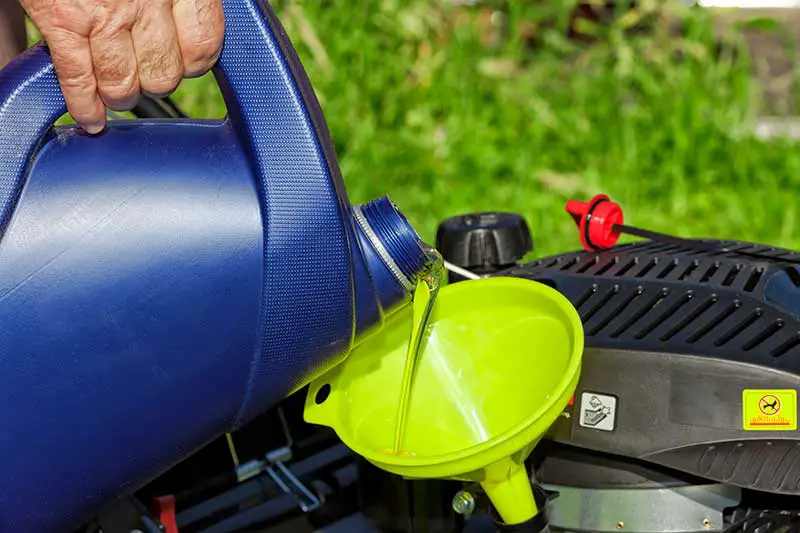
Different Kinds of Lawn Mower Oil
Single Grade Oil
Single grade oil is typically free of additives to change its viscosity. There are 11 types of single grade oils categorized by the temperature at which they perform best: 0W, 5W, 10W, 15W, 20W, 25W, 20, 30, 40, 50 and 60.
Multi Grade Oil
Multi grade oil contains additives that improve its viscosity across a range of cooler and warmer temperatures. To fall under this category, the oil must meet the requirements of multiple grades, i.e. one ‘W’ grade and one single grade.
Synthetic Blend Oil
Synthetic blend oil is a mixture of both regular and synthetic oil. It contains additives that help it to perform well at cold temperatures, providing the functionality of a full synthetic oil at a lesser cost.
Full Synthetic Oil
Full synthetic oil is an artificially manufactured lubricant that has a number of benefits. This oil is specially designed to be used in commercial and high-performance engines.
Choosing the Right Lawn Mower Oil
The main determining factor when choosing the right kind of lawn mower oil is temperature. Different oils will perform better than others at different temperatures depending on the oil’s composition and weight. You can look at the SAE viscosity grade to understand how the oil will perform at different temperatures.
SAE Motor Oil Viscosity Grade Explained
Motor oils are graded by viscosity by a body known as the Society of Automotive Engineers, or the ‘SAE’. Viscosity is a term that typically refers to the weight or thickness of a liquid, and serves as an accurate measure of how well oil flows at different temperatures.
The SAE grades the viscosity of motor oils using the notation X, XW, or XW-XX, where X is replaced with a numerical value.
- The first X preceding the W represents the flow of the oil at 0 degrees Fahrenheit. The W stands for winter, so the lower the number before the W, the less it will thicken and the better it will flow in lower temperatures. For instance, 5W-30 viscosity engine oil will thicken less in the cold than 10W-30, but more so than 0W-30.
- The XX value that comes after the W represents the viscosity of the oil measured at 212 degrees Fahrenheit. This number is indicative of how much the oil will resist thinning out at higher temperatures. For instance, a 10W-30 oil is more susceptible to thinning out at higher temperatures than a 10W-40 oil would be.
Common Types of SAE Lawn Mower Oil
In addition to a viscosity grade, all reputable brands of oil will also come with a service rating. All of the following types of mower oil are classified as SF, SH, SJ and SG use or more – this is the service rating you should look for when choosing an oil for your mower.
SAE 30
SAE 30 is a single-grade oil, otherwise known as a straight weight oil, which has a viscosity rating of 30. It functions best at warmer temperatures. SAE 30 is ideal for lawn mowers with smaller air-cooled engines and is typically used in older mower models. This Non-Detergent SAE 30 Motor Oil from Valvoline will do the trick if you have one of these mowers.
SAE 10W-30
SAE 10W-30 is multigrade oil with a well-balanced temperature range. In addition to performing well at warm temperatures, it also enables cold-weather starting. The only drawback to SAE 10W-30 is that it may result in higher oil consumption. Try using the Valvoline High Mileage SAE 10W-30 – it has been specially formulated to protect engines from breaking down and promises to increase the lifespan of your mower.
SAE 5W-30
SAE 5W-30 is a multigrade oil that has a low viscosity. It flows better at cooler temperatures than the 10W-30, while still providing the engine with enough protection from the heat. This Daily Protection SAE 5W-30 Motor Oil from Valvoline is a synthetic blend that has added detergents to keep your mower engine running smoothly.
Synthetic SAE 5W-30
Synthetic SAE 5W-30 is a synthesized, artificial oil that functions well in both hot and cold temperatures. The benefits of synthetic oil over other conventional oils are that it tends to be more stable across a range of temperatures, and it has a reduced amount of oil consumption. The Valvoline Advanced Full Synthetic SAE 5W-30 Motor Oil is our top pick as it performs extremely well at both hot and cold temperatures, and also has added detergents.
Vanguard 15W-50
Vanguard 15W-50 is a specific brand of fully synthesized oil that has been specially designed for commercial applications and landscaping businesses. It performs well at temperatures ranging anywhere from 20 to 130 degrees Fahrenheit.
While it is possible to use car oil in a four-stroke mower, this kind of oil cannot be used in a two-stroke mower. See our article Can You Use Car Oil in a Lawnmower for more information.
How Often to Check and Change Lawn Mower Oil
We have provided some general guidelines for how often to check and change the oil in your mower below.
If your lawn mower is new, you should change the oil after the first three to five hours of usage. The parts in a new engine will wear slightly during these first few hours of use, as their internal movement causes tiny metal fillings to be released into the oil. These fillings will cause excess wear to the engine if the oil isn’t swapped out for fresh oil.
For walk-behind mowers, you should change the oil at least once annually, or after every 50 hours of use.
For riding mowers, you should change the oil at least once annually, or after every 100 hours of use.
There are several factors that will affect the frequency of how often you should check and change your mower oil. Any conditions that make your mower work harder, such as mowing over severe dust and dirt, rough terrain, wet or muddy grass, and in a hot climate, will make it necessary for more frequent oil changes.
How to Check Lawn Mower Engine Oil Level
Follow these steps to check the oil level of your mower’s engine. You should repeat this process before you begin mowing each and every time.
This process is only necessary for lawn mowers with 4-stroke engines. It isn’t possible to check or change the oil in a mower with a 2-stroke engine as these machines are lubricated by their fuel which has oil mixed into it, as opposed to having a separate oil tank and inlet.
1. Find Oil Cap
Find the oil cap and dipstick on your mower. While cars have an oil cap and dipstick in separate places on the engine, lawn mower engines differ to this, as the oil cap and dipstick are joined together. On most models of mower, the oil cap will be demarcated with the word ‘oil’ or an oil symbol – make sure not to mistake this for the gas symbol. The oil cap is typically found either on top or somewhere near the top of the mower’s engine.
2. Unscrew Oil Cap and Clean Dipstick
Apply some pressure turning the oil cap clockwise to twist it open. Remove the cap and clean the attached dipstick with a clean cloth or rag. Doing so will enable you to take a clean reading of the oil level in the mower’s tank.
3. Replace Oil Cap then Remove Again
Insert the clean oil cap and dipstick back into the oil tank, making sure that the teeth of the cap are lined up with the groove top. Screw the oil cap back on by applying some anticlockwise pressure, then unscrew the cap once again by turning it clockwise.
4. Check Oil Level on Dipstick
Examine the oil level on the dipstick. The level should be indicated at somewhere between the ‘full’ and ‘add’ marks – these marks may appear differently depending on the model of the mower, with some models only having two holes to indicate them. Ideally, you should aim to have your oil level as close to the full mark as possible without exceeding it.
5. Adjust Oil Depending on Level
If your oil level is above the full mark, you will need to drain the excess, as it could cause your mower to smoke and may end up damaging it. On the other hand, if the oil level seems to be low, top it up by adding oil in small increments until it reaches up to the full mark.
If your lawn mower starts smoking after changing its oil, it’s likely that you’ve spilt some oil onto the engine. Let the mower run for a few minutes until the oil burns off and the smoking stops – if this doesn’t work, try following our other troubleshooting tips for a smoking mower engine in our article Lawn Mower Smoking: Reasons Why & How to Fix.

